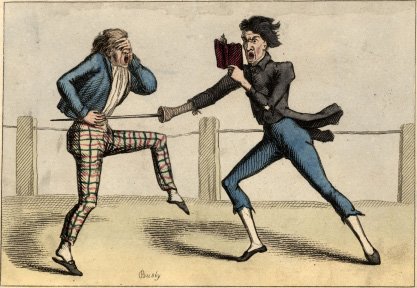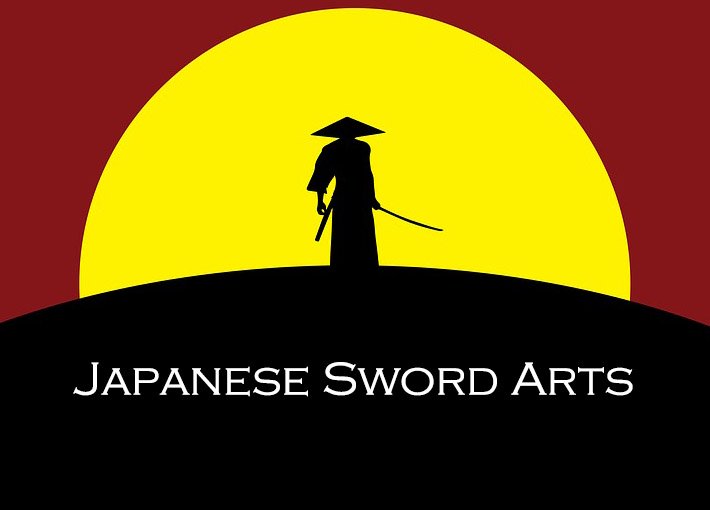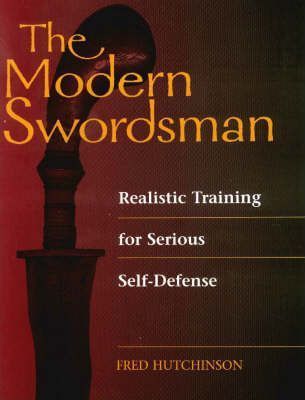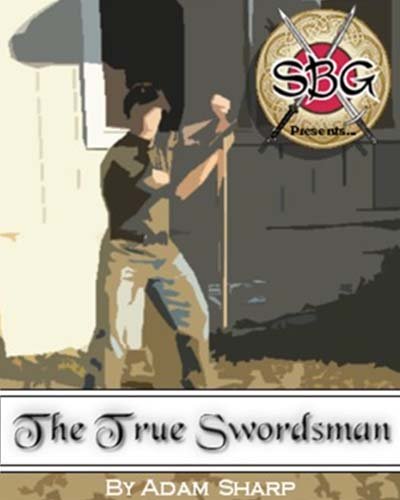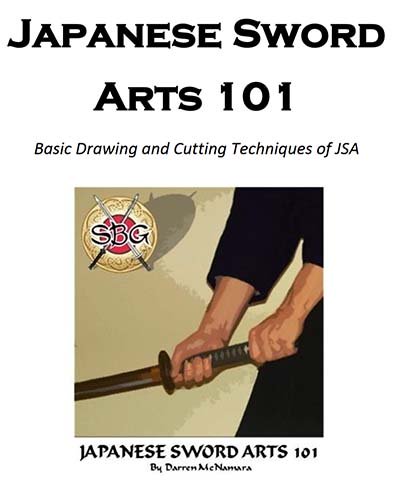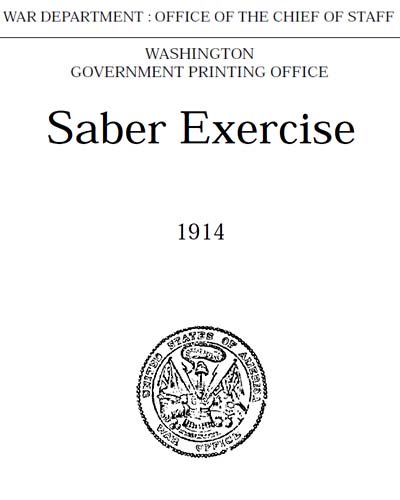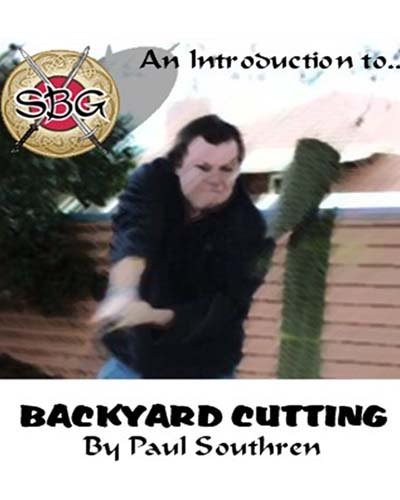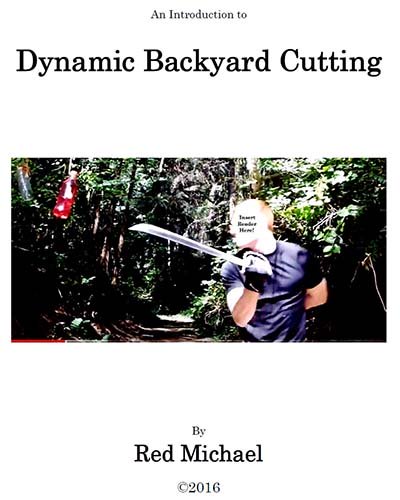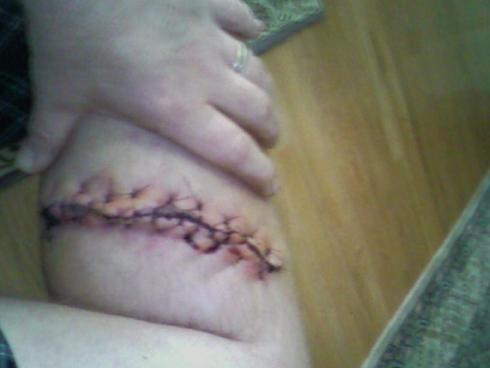Sword Fighting and Training Basics for Beginners
While sword fighting skills may not be as much of a pressing need as it was to our ancestors, most sword collectors have an interest - whether it is largely academic, a lifelong dedication to training or just practicing a few moves and/or doing some occasional (safety conscious) 'backyard cutting'.
With this in mind, I am pleased to present to you a series of articles that address the more practical side of the hobby - Western, Eastern and general sword principles as well as links to further resources and much more to be added as this page expands over the coming months.
To get started, simply select your main area of interest from the menu below.
Select Your Sword Fighting Style
Universal Sword Fighting Principles
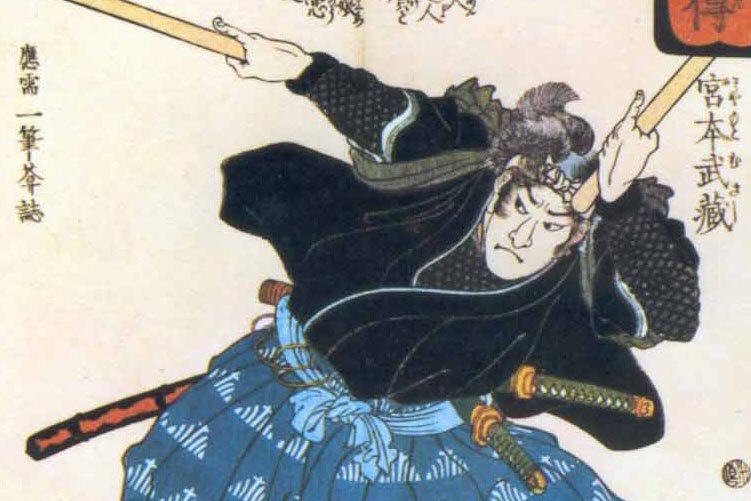
Did you know that you can read the classic treatise on Sword Fighting, the Book of Five Rings by Miyamoto Musashi for Free Online? Check it out here!
Like the humorous illustration at the top of this page, the basic principle of a sword fight was to deliver a fight ending blow without taking one yourself - or as the Sword Saint, Miyamoto Musashi put it, "the object is to cut down your enemy".
Simple enough, but as is often the case, the simple things in life are often overlooked.
While battle was and still is essentially chaotic in nature, and no plan survives first contact with the enemy, there are several characteristics and factors common to the winner (survivor) of a medieval duel, trial by combat or battlefield ordeal - and these are outlined in chapter 14 of Hank Reinhardt's excellent book, the Book of Swords as follows:
- Physical Conditioning (modern people were nowhere near as tough as our ancestors) especially of the back and the abdomen, though cardio and strong wrists are key for Sword Fighting.
- Mental Aspects - specifically, Awareness & Calmness/Serenity.
- Deception - fighting fair is a sure way to get you killed in a sword-fight. Historically, foul play was not only expected, it was par for the course.
- Confidence and Toughness of Spirit
- Rhythm - or rather, the lack of it. Falling into a predictable pattern is anathema to sword fighting.
- Intimidation - or rather, not being intimidated or using intimidation against a lesser opponent.
- Timing and Distance - simple enough, but striking at the right time and being close enough to actually hit is a skill in itself.
- And finally Caution - not timidity, but having enough common sense to not underestimate your opponent.
Most of these factors to winning a sword fight, be it in a duel 400 years ago or in a modern day sports contest, are self explanatory, timeless principles. But while quite a few are more or less the correct 'winning' mentality and take years to cultivate, others are simple techniques or tricks.
For example, it is relatively easy to learn a few tricks and employ deception in Sword Fighting. Examples include, feigning weakness or fear before attacking strongly, glancing down at a leg, dropping the shoulder and feinting a downward blow only to whip it up and attack the helmet, or the classic Musashi tactic - feigning to jump aside when the enemy attacks, and then dashing in strongly the millisecond they relax..
Examples of Simple Deception in Sword Fighting
Example One
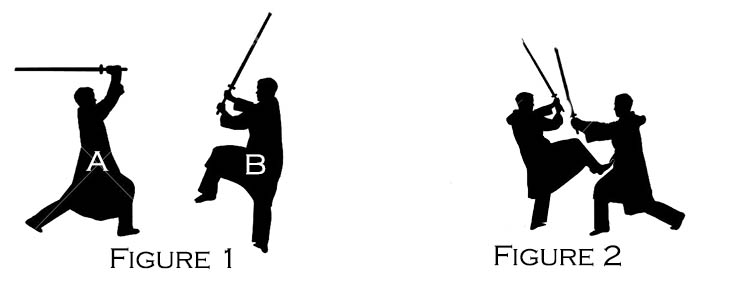
Figure 1: Fighter A closes the distance with sword raised preparing for what appears to be a mighty overhead strike.
Figure 2: With sword still raised, his actual attack is a hard kick to Fighter B's liver, groin, bladder or midsection, his sword raised to intercept against Fighter B's sword if the kick is unsuccessful, or attempt to deliver a follow up strike on his momentarily staggered opponent..
Example Two
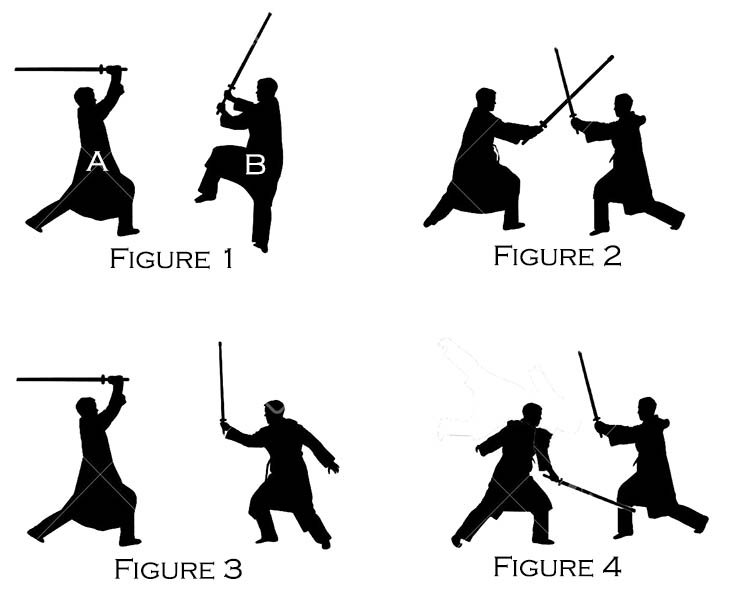
Figure 1: Fighter A steps in and prepares to deliver a full force overhead attack on Fighter B with speed and intent.
Figure 2: Fighter B wisely parries the attack with the forte (strongest part) of his sword.
Figure 3: Without missing a beat, fighter A follows up with what looks like the same attack he did in figure 1, however..
Figure 4: While looking at the opponents head and keeping the actual target only in his peripheral vision, he sidesteps out of the way of any potential counterattack and attacks with one hand, suddenly dropping the attack into his opponents foremost leg. Because the first attack was so strong and potentially deadly, Fighter B is likely to fall for the feint.
Simple tricks like these work, but they do not occur in a vacuum. One of the classic Musashi tactics is to utilize everything in the environment to your advantage - such as standing with the sun behind you so that the glare distracts your opponent, or chasing them in such a way that they trip over inanimate objects behind them.
However real skill at sword fighting occurs not from a few simple tricks, but when all the winning factors are present. As Hank and Musashi both note, it all comes together when you are 'in the zone' - when you aren't really thinking about anything in particular and just let everything happen naturally, with the right technique at the right time delivered at the right speed to the right target at the right distance.
To achieve this state of 'no-mind' one must train diligently. Below are some training techniques from an excellent resource I found to help you create the necessary foundation.
Basic Attacks and Lines of Defense
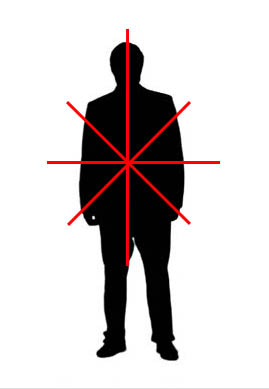
There are basically 8 angles of attack with a sword when cutting - straight down, straight up (ouch!), diagonally down to the right, diagonally down to the left, diagonally up to the right, diagonally up to the left and left and right strikes horizontally.
While other angles are theoretically possible, they are all pretty much variations of the 8 main attack angles - as are thrusts.
Most experts agree that if you want to win at sword fighting, you are better off seizing the offensive than waiting for the right time to counter-attack. But no matter how skilled you are on the offense, at some point you will have to take some defensive action, and for that there are basically 5 main counters as shown below.
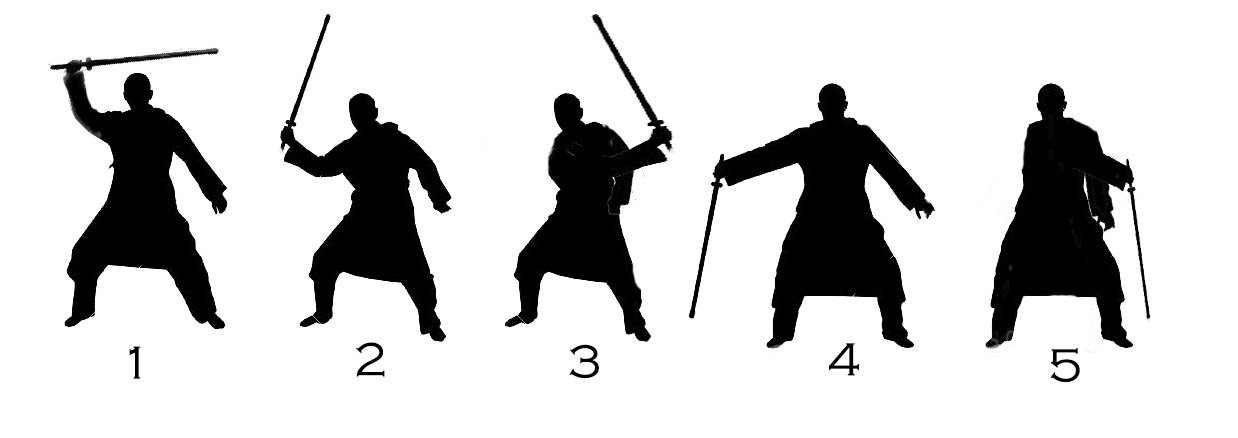
1: Can be used to defend against an overhead attack and should have enough space so that it can absorb the force of the incoming blow. The same basic principle can be used against a rising vertical attack, though with the sword held downwards instead of up.
2: Simply extending the arm outwards and away from the body can parry most downward diagonal cuts or thrusts or high horizontal attacks coming from the left to the right.
3: Conversely, an attack from right to left is parried by swinging the arm across the body.
4: Diagonal rising cuts, cuts directed to the right leg, or low horizontal attacks can be parried by dropping the sword downwards and bracing with enough space to absorb the impact of the blow.
5: Conversely, low attacks directed to the left side of the body are parried by turning the wrist so that it faces outwards and sweeping the attack aside.
Unlike Hollywood however, parries should be a last resort and should be part of a layered defense as the best option to avoid an incoming strike or thrust is to not be there when the strike comes in, by a combination of footwork, slipping or ducking the attack and having a parry in place as a last line of defense.
Sword Training Drills
It is a controversial book, with stick figure illustrations and somewhat lightweight at only 80 pages. But the Modern Swordsman by Fred Hutchinson is, at least in my opinion, one of the very best books on Sword Fighting and Sword training for the self taught swordsman ever written..
From training on a wooden pell to deliberately practicing sword strikes in slow motion with exaggerated strikes that extend beyond the ideal to simulate the effects of an adrenaline surge on technique, to recommendations to train with overly heavy swords to build up muscle all the right spots and make a normal sword feel weightless, this book is jam packed with unique and innovative sword training ideas.
For example, have you ever thought about training your hand eye coordination by striking or thrusting at floating, randomly moving bubbles?
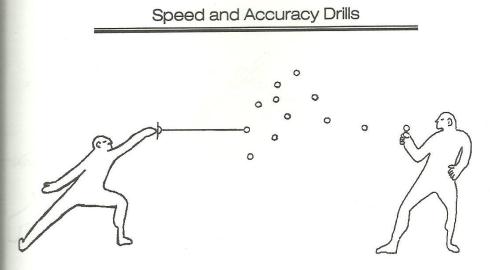
You would be surprised how hard it is - and how such a simple drill can dramatically increase your precision and ability to avoid focusing on details that will distract you or cause you to lose focus.
Probably the best $7.99 I ever spent on a Sword Fighting Book and absolutely no fluff or filler..
Real Sword Fighting
Why train for it and what it would really be like..
No-one these days who trains in swordsmanship literally expect to end up in a life and death sword fight. But most serious martial artists who study the sword, be it in the Eastern or the Western Tradition mentally train as if preparing for the real thing in order for it to be valid and as Guy Windsor so eloquently put it in his book Sword Fighting For Writers, Game Designers and Martial Artists "Every martial art is, at its root, a way to handle the terror that comes with someone trying to kill you".
In a very personal story by Guy, he explains how his sword training helped him cope with the stress of almost losing both his wife and his baby daughter to a pregnancy gone horribly wrong in its late stages. Part of this was combat breathing (in for 4, hold for 4, out for 4, hold for 4) but the majority of his strength came from his sword training experiences and mental toughening it brings about..
Because back in the day, real sword fighting was much more hideous, viscous and downright frightening than Hollywood could ever imagine. Forensic archeologists have found that the vast majority of skeletons found on the battlefield took several hideous blows before they finally succumbed to their wounds..
In his book, Guy writes on the subject:
"The mental state of the combatants is usually maximum arousal expressed as rage, especially when wounded. The records abound with tales of men continuing to fight long after a sensible modern person would have stopped and called an ambulance... There is no pain in the midst of combat. That comes later"
Test Cutting
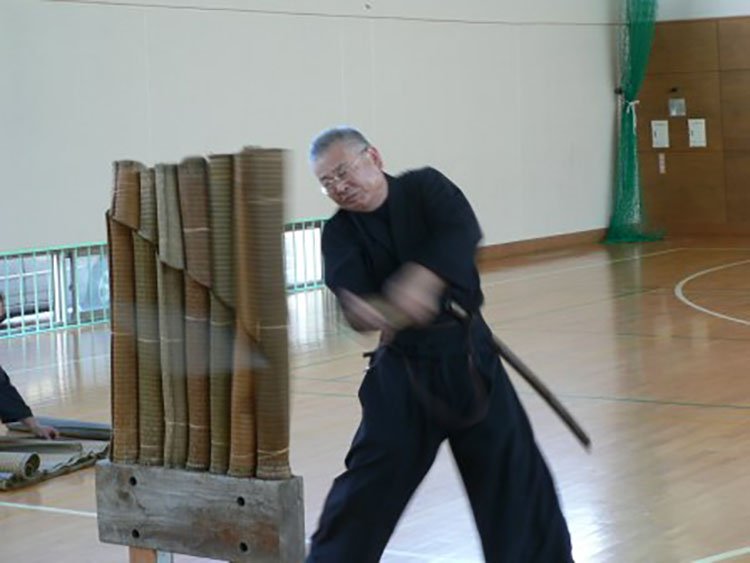
Probably the most exciting part of training, other than sword fighting and sparring practice, is test cutting - and it is practiced at various levels.
From formalized and very serious Japanese Tameshigiri to casual backyard cutting of water filled bottles, often all you need is to take into account some very important safety considerations, a suitable target and - of course - a well made and sharp sword.
So what is a suitable target? Well, here are some that are popular in the sword training community:
- Soft rush mats, either tatami mats or cheaper beach mats (though beach mats do tend to scratch up a blade and are not as consistent as tatami).
- Water filled P.E.T. bottles and milk jugs
- Pool noodles (great for perfecting speed and edge alignment)
- Carpet Rolls
- Bamboo or River Cane
- Cardboard Tubes or boxes (though cardboard can scratch up a blade as well as they often have some of the abrasive grit used in the pulping process left behind).
- Rolls of soaked newspaper, either with or without a PVC insert to simulate bone.
Of course, for the sharp sword part - you'll find plenty of reviews and
information on many different types of swords in the various sections of
SBG.
But for information on what kind of targets to use and how to cut safely, I think you'll find the free ebook and video below to be of some considerable benefit:
FREE EBOOKS FROM SBG!
100% free to download PDF eBooks from SBG. Simply click on the cover to download - no messing about, no asking for your email address, no need to subscribe to our newsletter (though you can if you like, its how we will tell you when new ones become available).
Just free information (free to read, free to distribute - just don't change anything or try to sell them!)
 No BS, just free downloads
No BS, just free downloadsAn important Word on Sword Safety
WARNING - GRAPHIC IMAGE DIRECTLY AHEAD...
VIDEO: Sword Safety 101
A MUST watch video for everyone and anyone who handles swords
They say a picture tells a thousand words..
And in this case, the picture sent to me below is the best way to REALLY drive it home that swords are not toys and that a moments lack of concentration can have implications that last a lifetime...
This injury was caused by a Gladius made in the Philippines that cut right through the target and kept going, biting deep into the cutters leg and causing him to lose 6 pints of blood and requiring 66 stitches and emergency surgery...
Swords are not toys. So please, for your own sake AT THE VERY LEAST, watch the video to avoid this kind of thing happening to you...
Seriously.
I hope you found this information on sword fighting and training helpful. To return to the Sword Buyers Guide Hompage from Sword Fighting and Training Basics, click here

Buying Swords Online Can Be DANGEROUS!
Find the Best Swords in the:
Popular & Recommended ARTICLES

The ONLY true free online magazine for sword enthusiasts. Delivered once a month on the 1st day of the month, no filler and no BS, just the latest sword news & info delivered straight to your inbox.


